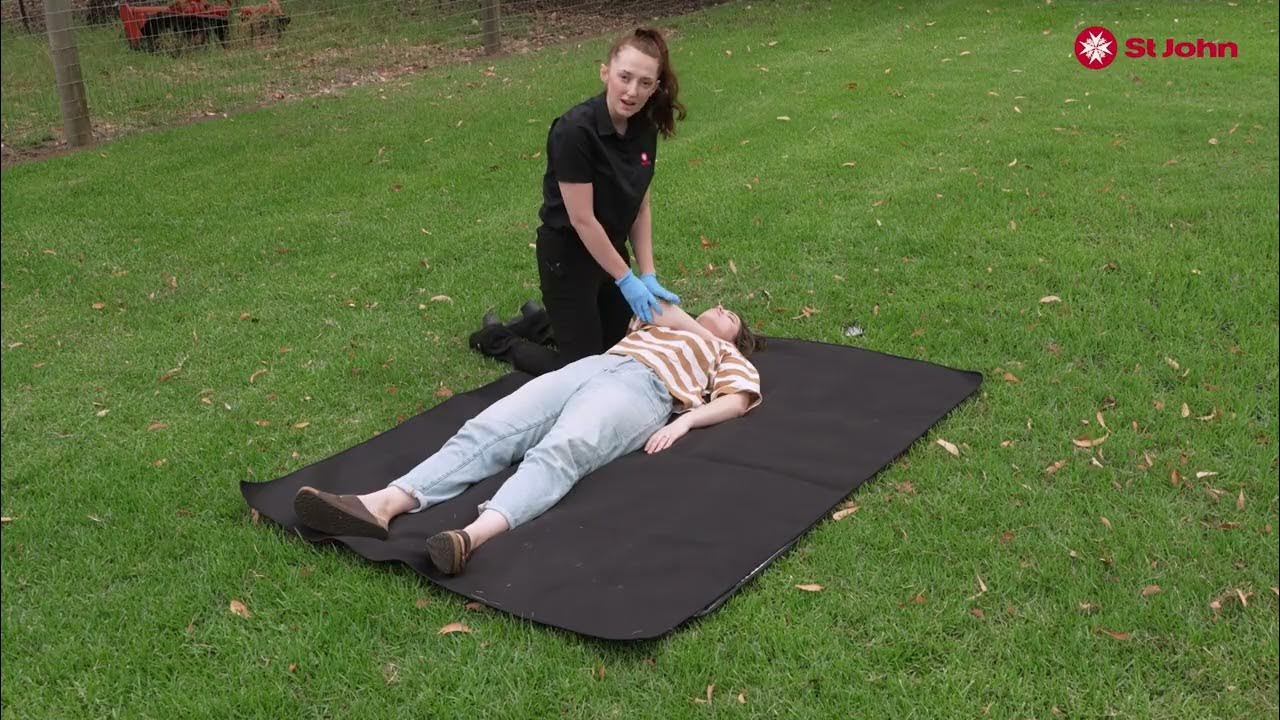How to treat drowning on the First Aid Show
Summary
TLDRThis video provides essential guidelines for responding to a drowning incident where the victim is unresponsive and not breathing. It emphasizes the importance of safety, the differences in treatment between drowning and cardiac arrest, and the sequence of CPR steps tailored for drowning victims. Key steps include checking for breathing, delivering five rescue breaths, followed by CPR with compressions and breaths. The video also highlights the importance of calling for help early and continuing care until emergency services arrive. The approach for drowning victims is similar to CPR for children aged 1-18.
Takeaways
- 😀 Safety first: Always prioritize the safety of yourself and others when responding to a drowning incident.
- 😀 Drowning victims are typically found on their back, which is important to remember during rescue attempts.
- 😀 Water conditions like cold temperatures, currents, and obstructions should be considered when performing a rescue.
- 😀 Drowning is often caused by respiratory issues, unlike other medical emergencies where cardiac problems are more common.
- 😀 CPR for drowning victims differs slightly from standard CPR, with a focus on starting breathing before chest compressions.
- 😀 If there are others present, send them to call EMS; if you're alone, continue with the rescue process and call for help once possible.
- 😀 Open the airway and check for breathing for 10 seconds, and if absent, deliver five rescue breaths before CPR.
- 😀 Perform 30 chest compressions followed by two breaths for one minute as part of the initial CPR response.
- 😀 If you're alone, follow the 'Call Fast' approach: after one minute of CPR, leave to call for help.
- 😀 The five rescue breaths are designed to restart the victim’s breathing, particularly if they have a weak pulse but no noticeable breath.
- 😀 The drowning CPR sequence is the same for children aged 1-18, making it applicable to a wide age range.
Q & A
What is the first priority when responding to a drowning victim?
-The first priority is safety. Ensure that neither you nor others are at risk, and take precautions to avoid hazards like cold water, obstructions, or strong currents.
What is the key difference between responding to a drowning victim and someone not breathing in an office setting?
-The key difference is that in a drowning situation, the cause of the lack of breathing is usually respiratory, whereas in an office setting, it's more likely to be caused by a cardiac issue.
What should you do if a drowning victim is unresponsive and not breathing?
-First, check for breathing for 10 seconds. If there is no breathing, give 5 rescue breaths, then perform 30 chest compressions followed by 2 rescue breaths for one minute.
What is the purpose of delivering 5 rescue breaths first in a drowning scenario?
-The goal of the 5 rescue breaths is to try to restart the victim's breathing before moving on to chest compressions. This may help if the victim still has a weak pulse or some respiratory function.
If you are alone, what should you do after providing one minute of CPR?
-If you are alone, after one minute of CPR, you should leave the victim to call for help (EMS) as part of the 'call fast' approach, then continue CPR until help arrives.
What does the term 'call fast' approach refer to in this context?
-'Call fast' refers to the strategy where, if you're alone, you perform CPR for one minute before leaving the victim to call for emergency medical services (EMS).
Why is it important to give 5 rescue breaths initially instead of starting CPR right away?
-The 5 rescue breaths are aimed at starting the victim’s breathing again before moving on to chest compressions. This is because drowning victims often stop breathing due to a respiratory issue rather than a cardiac one.
What steps should be followed when performing CPR on a drowning victim?
-After checking for breathing, provide 5 rescue breaths, then perform 30 chest compressions and 2 rescue breaths. Continue this cycle for one minute, then leave to call for help if you're alone or send someone else to call EMS.
How does the CPR sequence for a drowning victim differ from CPR for an office scenario?
-The sequence is slightly different because for drowning victims, you start with 5 rescue breaths to address the respiratory issue first, while for non-drowning victims, the focus is typically on chest compressions immediately.
Is the CPR sequence for drowning victims the same for children and adults?
-Yes, the sequence for drowning victims is the same for children aged 1 to 18 as it is for adults. The approach focuses on restoring breathing first before moving on to chest compressions.
Outlines

此内容仅限付费用户访问。 请升级后访问。
立即升级Mindmap

此内容仅限付费用户访问。 请升级后访问。
立即升级Keywords

此内容仅限付费用户访问。 请升级后访问。
立即升级Highlights

此内容仅限付费用户访问。 请升级后访问。
立即升级Transcripts

此内容仅限付费用户访问。 请升级后访问。
立即升级5.0 / 5 (0 votes)






